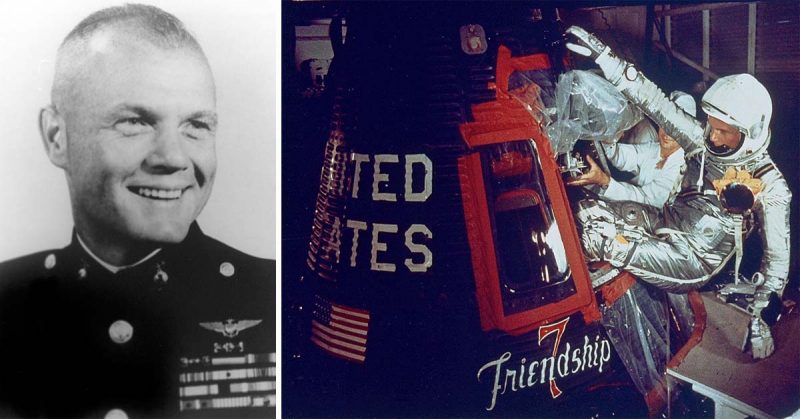John Glenn, born July 18, 1921, was the oldest living former U.S. senator until his death on December 8. Before his 25-year career in the Senate (1974-1999), however, he earned his place in American history flying at breakneck speeds in rocket-powered dog fights and orbiting Earth as part of NASA’s original Mercury 7 group of astronauts.
John Glenn was a legendary figure. He was a high achiever in every arena he stepped into, despite less than compelling starts. For example, after he announced his first bid for the U.S. Senate from his home state of Ohio, his campaign was not long underway when he slipped and hit his head on the bathtub, causing a concussion and inner-ear problems that ended his run. And despite a hard fight to secure the Democratic Party primary to run for the seat, several failed presidential bids, and even a scandal, he lasted through a long and successful Senate career.
Likewise, though technically not meeting the minimum criteria NASA had laid out for selecting the Mercury 7, he made the cut and in 1990, he was inducted into the Astronaut Hall of Fame.
The same theme holds true for his impressive military aviation career. After Pearl Harbor was attacked on December 7, 1941, Glenn quit college to join the U.S. Army Air Corps, which didn’t call him up for duty. So, he joined up as a U.S. Navy aviation cadet and received advanced flight training. Again, he was to transfer to the U.S. Marine Corps before he saw any flight action.
Eventually, he transferred again to squadron VMF-155 and flew 59 combat missions in the Pacific. He was promoted to the rank of captain before the end of World War II.
The plane he operated in these missions was the F4U Corsair, one of the fiercest fighters the U.S. had put into the skies before jet-propelled aircraft became the latest and greatest. Japanese pilots knew the F4U to be their greatest challenge among the fighters they encountered through the war. The U.S. Navy puts their kill ratio at 11:1.
Glenn next served in the Korean War (1950-53), again with the Marines, and started off flying an F9F Panther jet interceptor (he flew 63 combat missions in this craft). This jet fighter was straight-wing and was constantly being outclassed by the Russian-built MiG-15. The U.S. had a counter to this, however: the F-86 Sabre, which had been in development for several years and adopted by the Air Force in 1949. It was the first U.S. swept-wing fighter (like the MiG-15) and, of course, had a jet engine.
Glenn joined an interservice exchange program for his second tour in Korea and flew the model F-86F Sabre with the Air Force’s 51st Fighter Wing..
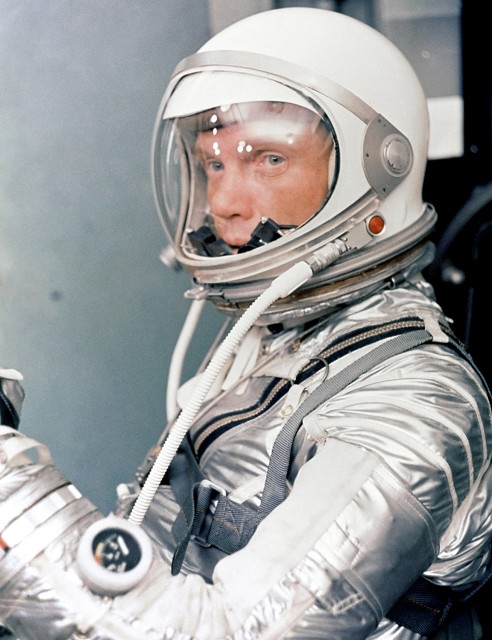
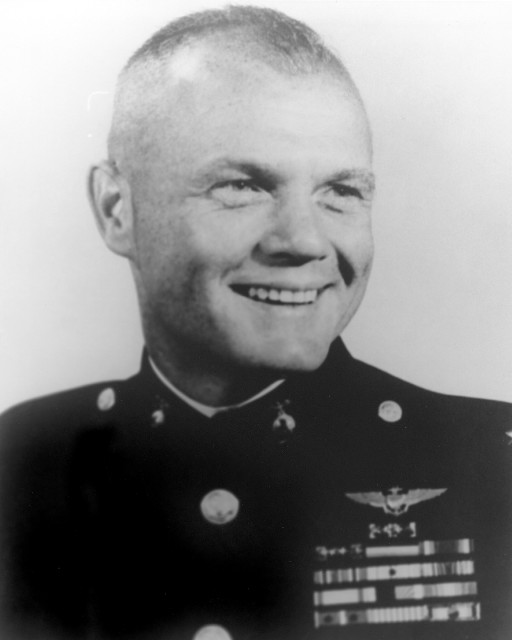
Though the MiG-15s had better guns, acceleration, climb, top speed and maneuverability at higher altitudes than the F-86F Sabre, the latter had better speed and maneuverability at much lower altitudes and one more very useful feature. The F-86 fighters were equipped with a radar gunsight which even calculated target range on screen for the pilots. This proved a huge asset and helped level the playing field for the U.S. pilots. The Russians worked like mad to get their hands on one of these
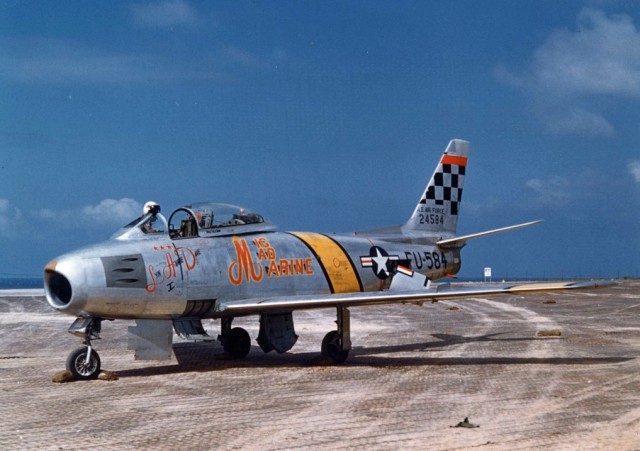
Glenn flew 27 combat missions in the F-86F Sabre and, in one of the last days of fighting before the ceasefire, shot down 3 MiG-15s.
After the Korean War, Glenn went through training at the U.S. Naval Test Pilot School and became an armament officer, flying planes at high altitude and testing their cannons and machine guns. Throughout his life of flying America’s top aircraft, Glenn logged over 9,000 hours of flight time.
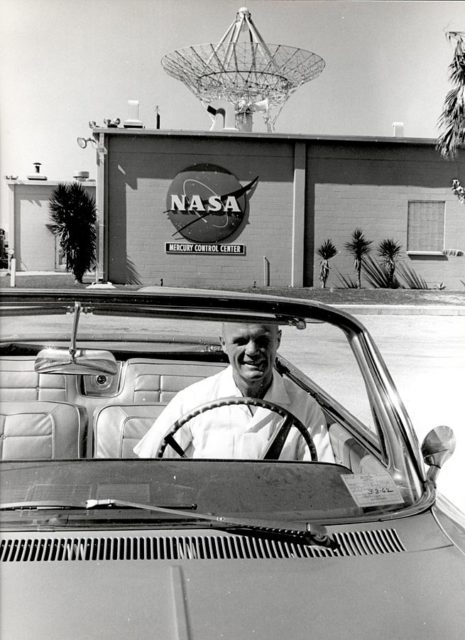
In one of many noteworthy accomplishments, records, and firsts, Glenn was the first person to complete a transcontinental flight at supersonic speed on July 16th, 1957. His craft was the Vought F8U-3P Crusader, the first U.S. plane which could sustain speeds over 1,000 mph. He flew from Naval Air Station Los Alamitos, California, to Floyd Bennett Field, New York, in 3 hours, 23 minutes, and 8.3 seconds.
These were the days of some of America’s most storied pilots pushing the bounds of human flight both in speed and altitude. Tom Wolfe wrote the famed novel The Right Stuff about these men and their daring lives. A huge feature of the book is the selection of the Mercury 7. Of that group of pilots who captured American awe and fascination, NASA figured John Glenn was one who had the “right stuff” to go into space.
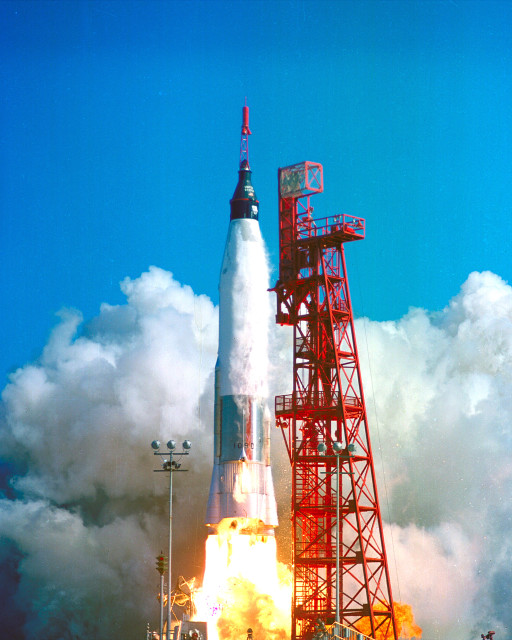
He was just barely within the age requirement (40 being the limit) and didn’t have a completed college degree, but he was chosen, regardless. On February 20th, 1962, during the Mercury-Atlas 6 mission, John Glenn became the first American to complete an entire orbit around the Earth. In fact, he orbited Earth three times in 4 hours, 55 minutes, and 23 seconds in the Friendship 7 capsule, before re-entering the atmosphere and splashing down in the Atlantic Ocean. Glenn reached the velocity of 17,544 mph on his cruise around the globe.
Glenn returned to land an American hero. He was awarded the NASA Distinguished Service Medal by President John F. Kennedy, which started a close friendship with several members of the Kennedy family. This, along with NASA noting him as the member of the Mercury 7 most suited for public life back in the selection process, probably prompted both his Senate and presidential bids.
Ask many astronauts, however, and they’ll tell you space has a beckoning allure which calls them back. Glenn spent two years in the mid-1990s pushing NASA to accept that he could be a test subject for geriatrics in space. In 1998, NASA announced that Glenn was selected as part of the space shuttle crew for Discovery’s STS-95 mission. And on October 29th, 1998, Glenn became the oldest person ever to go into space at the age of 77.
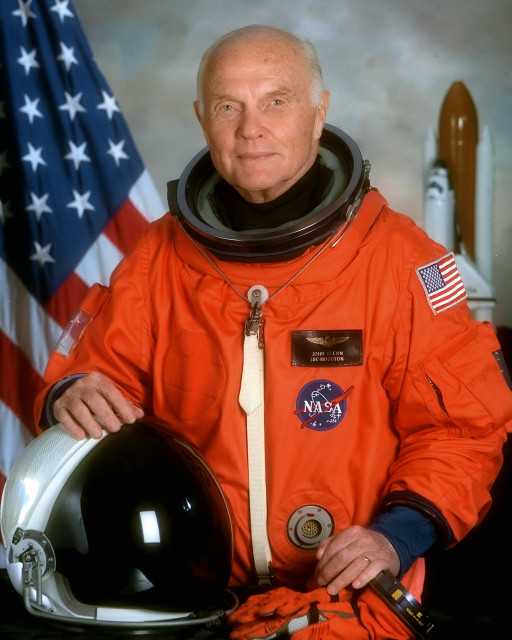
His whole life, John challenged the limits of what human beings can do in the sky and has been granted the recognition of a nation in great admiration.
According to NASA, his list of awards and honors are as follows: “Glenn has been awarded the Distinguished Flying Cross on six occasions, and holds the Air Medal with 18 Clusters for his service during World War II and Korea.
Glenn also holds the Navy Unit Commendation for service in Korea, the Asiatic-Pacific Campaign Medal, the American Campaign Medal, the World War II Victory Medal, the China Service Medal, the National Defense Service Medal, the Korean Service Medal, the United Nations Service Medal, the Korean Presidential Unit Citation, the Navy’s Astronaut Wings, the Marine Corps’ Astronaut Medal, the NASA Distinguished Service Medal, and the Congressional Space Medal of Honor.
On March 1, 1999, NASA renamed its Cleveland center the ‘John H. Glenn Research Center at Lewis Field’ in his honor.”
John Glenn died in hospital in Columbus, Ohio, on December 8, 2016, at the age of 95. An inspiration to us all.
By Colin Fraser for War History Online
